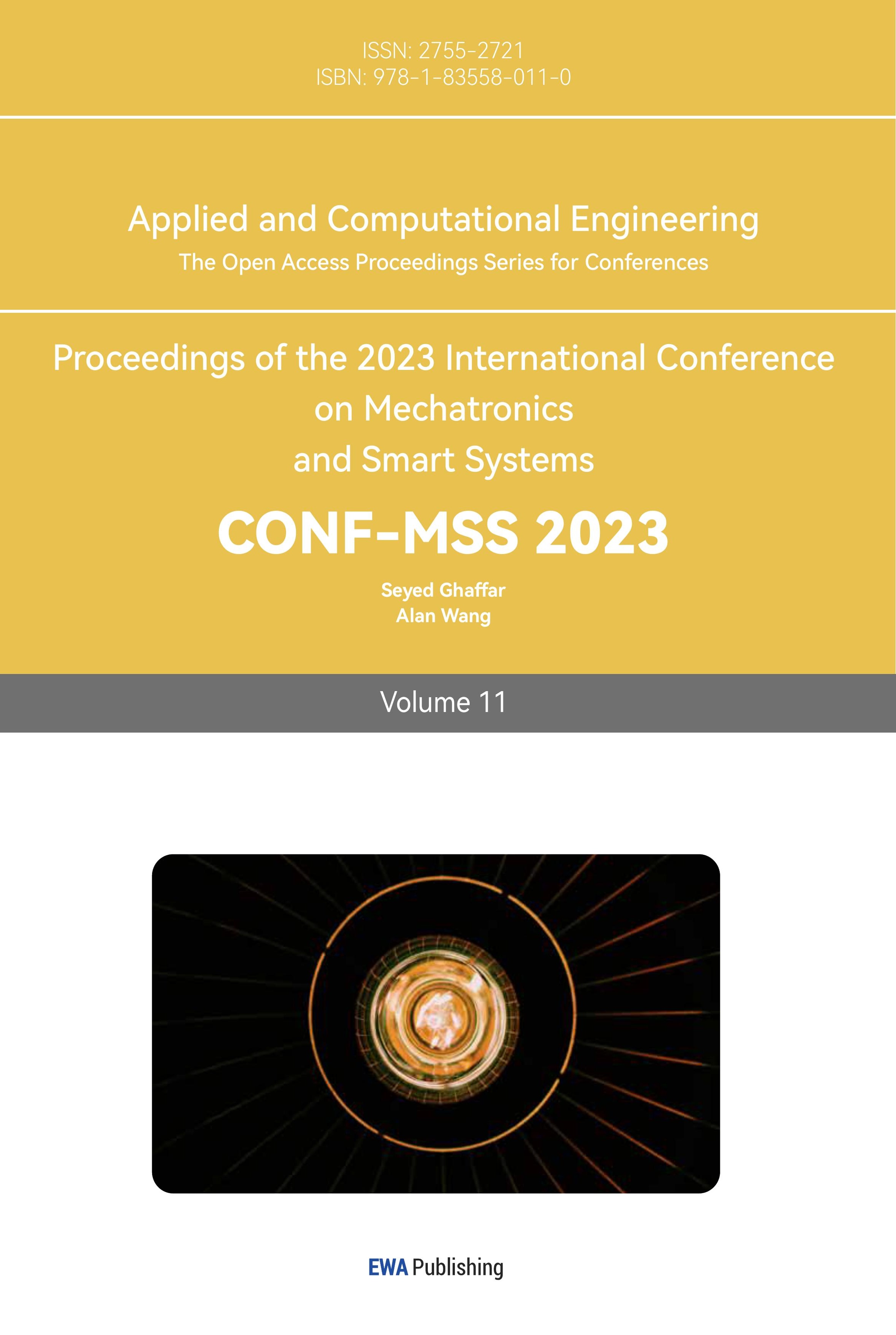1. Introduction
A gas turbine is an internal combustion engine that operates with rotation motion rather than reciprocating motion, which leads to high speeds and a continuously operating process. The micro/small-scale gas turbine is a gas turbine, but the power output and volume define the name “micro”. It also can be called “nano”. It usually has a larger amount of power with a smaller weight and size. Small-scale power generation is one of the technology choices for power generation and efficient supply to the grid and rural areas, with smaller volumes and fewer emissions.
Decentralized power is characterized by power generation close to demand centers, mainly focused on meeting regional energy needs. A decentralized power system can function either in the presence of grid, where it can feed the surplus power generated to the grid, or as an independent/stand-alone isolated system exclusively meeting the local demands of remote locations [1].
Because of the damage caused by rapid climate change and foreseeable global warming, access to sustainable energy has become key to sustainable development of a global society. Meanwhile, as the internal combustion engine has been widely used in various fields of the national economy, with its large output and quantity, environmental pollution is becoming more and more serious. This circumstance makes renewable energy more widely used in gas turbines. According to the International Energy Agency (IEA), coal is the most used resource globally, and renewable resources such as hydro and wind still need to be more widely utilized [2]. Figure 1 demonstrates the proportion of different renewable resource utilization. Biomass contributes 50% of all of them.
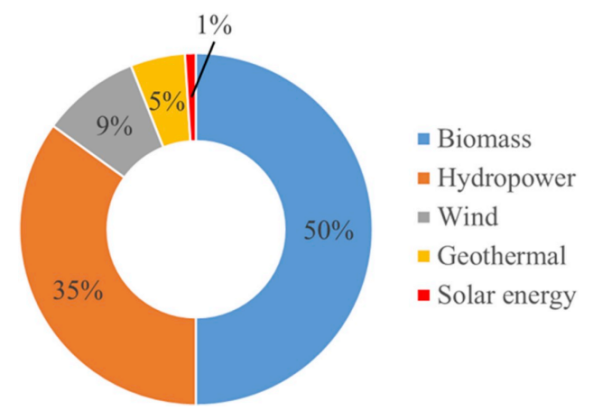
Figure 1. Percentage of power generation resources utilized globally [3].
Gas turbines possess certain merits such as low maintenance expense, low vibration level and short delivery time compared with diesel engine. Its smaller weight and size can bring more convenience for construction and popularization and higher efficiency. Meanwhile, most small-scale power generation started to use renewable energy with more significant public attention to environmental issues. These turbines would help improve the power.
2. Distributed energy generation (DEG)
Distributed generation, also referred to distributed energy, is the electrical production and storage of a variety of small, grid-connected or distribution system-connected devices known as distributed energy resources (DER) [4]. Generally speaking, DEG system comprises many small-scale power plants in different places. DEG is a new trend in the power industry and the market. It mainly depends upon installing and driving a small-scale, compact and clean generator set under electrical or near-load conditions [5].
2.1. Advantages
Replacing centralized energy plants with DEG systems has significant advantages.
A DEG system can efficiently reduce substantial carbon dioxide because renewable sources like solar power and wind can replace fossil fuels.
The location of DEG plants is usually near industrial, commercial and residential users, which means it can reduce energy losses due to inefficient power lines.
Distributed systems provide various types of energy resources and fuel choices taking advantages of different technologies. Thus, there will be no more demand for one certain type of fuel than others.
The combined heat and power system allows DEG to harness energy. The short distance between generation and consumption provides access to small heat sources/sinks, and an opportunity to utilize waste heat for cooling/heating purposes which is barely possible in practical centralized power generation.
Apart from the economic benefits, DEGs technically favor the operation of the system. These companies can provide enough electricity to meet demand and reduce unnecessary electricity flows within the transmission network, thereby reducing electricity losses on the grid.
2.2. Types and technologies
Figure 2 shows a summarization of different DEG technologies in the mix.
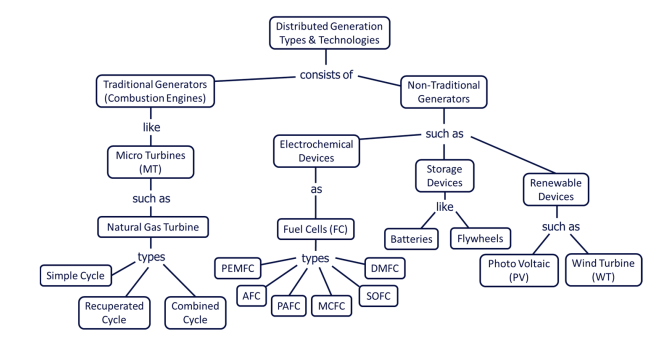
Figure 2. Different types and technologies of distributed energy generation [4].
2.3. Development of DEGs
DEGs are becoming increasingly common worldwide. They are more widely available, efficient with lower prices than a decade ago. Figure 3 demonstrates the share of DEG in global generating capacity in 2000 and 2020. The proportion of distributed power generation increased and almost caught up with the centralized power generation in this two decades.
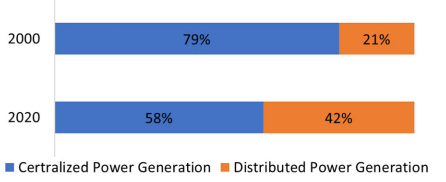
Figure 3. Share of DEG in global generating capacity [4].
There are some researches that showed a positive relationship between increased use of electricity and improvements in income, education and health. In particular, developing countries with low per capita income, such as China, India, and Brazil, are the countries with the highest demand for distributed power currently [6].
3. Small-scale biomass power plants
Biomass power, or biofuel, is a promising renewable energy resource specially produced from botany biomass, vegetable oils, or treated industrial wastes. Biomass is non-pyrogenic and biodegradable organic materials derived from natural creatures, so this kind of renewable energy has a significant amount of availability, which makes biomass considered one of the main energy sources and the primary substitute to conventional fuels that is enough to meet the sustainability of future fuel supplies. As old as human civilization, energy based on biomass is one of the most critical environmental-friendly energy resources to meet daily energy requirements. A new type of small power plant capable of generating electricity and heat from solid and gaseous biomass has been proposed for rural electrification projects [7]. As shown in Figure 4, waste, such as industrial waste, produce more biomass than other factors.
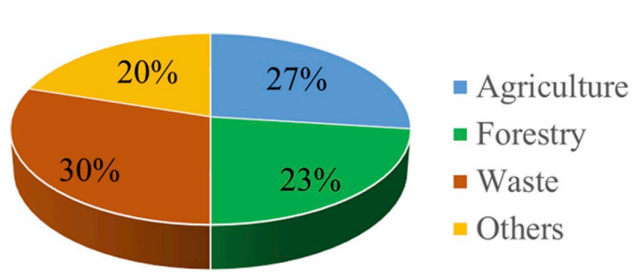
Figure 4. Percentage of biomass resources [3].
3.1. Micro gas turbine combustion process
Micro gas turbine technology can be integrated with direct biomass combustion systems. The operation process is given in Figure 5.
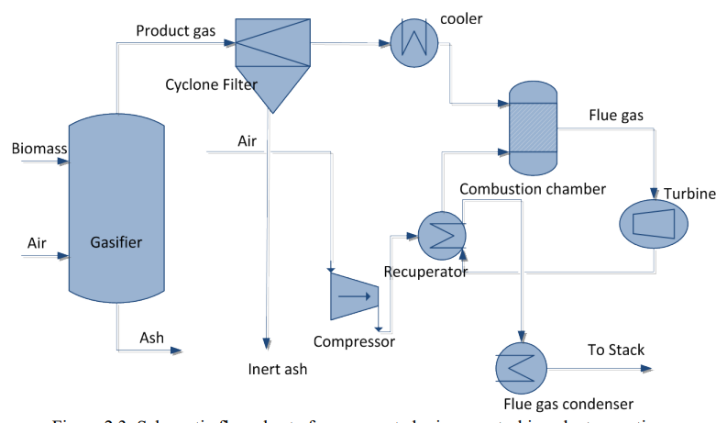
Figure 5. Schematic flow sheet of a recuperated micro gas turbine plant operation [8].
The operating principle of micro gas turbines is in the same way as the conventional gas turbine, the Brayton cycle. Here, Figure 6 clearly shows the two typical diagrams of the Brayton cycle.
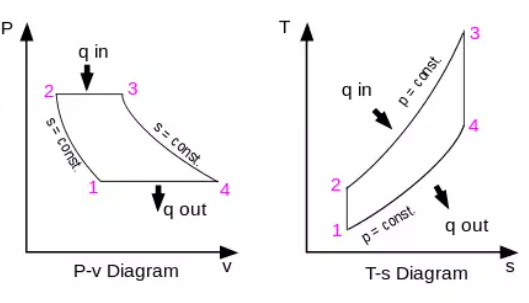
Figure 6. Pressure and volume diagram, temperature and entropy diagram of Brayton cycle.
3.2. Examples
3.2.1. An experimental prototype. The scheme associated with this experimental prototype is as follows, a Steam Rankine Cycle (SRC) bottoming cycle shown in Figure 7. Figure 8 shows an experimental prototype that Politecnico di Bari is currently working on.
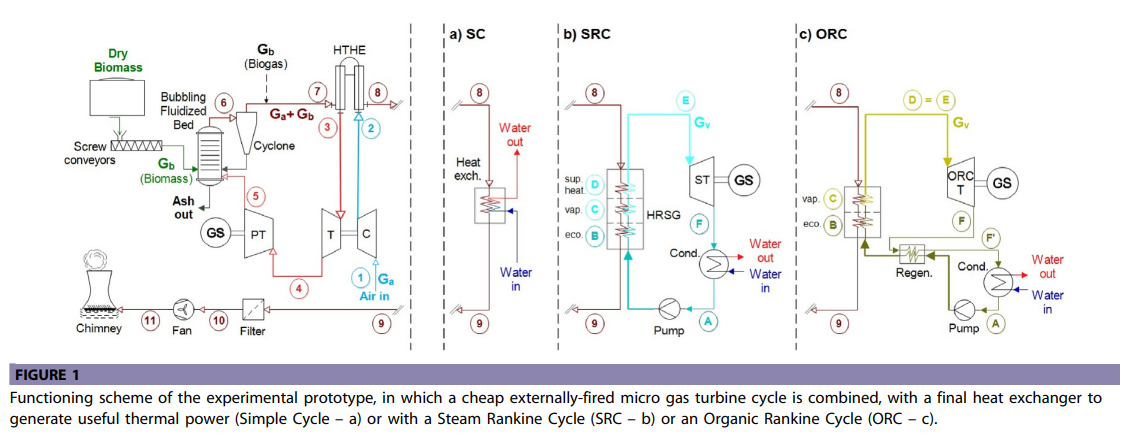
Figure 7. Functioning scheme of the experimental prototype [7].
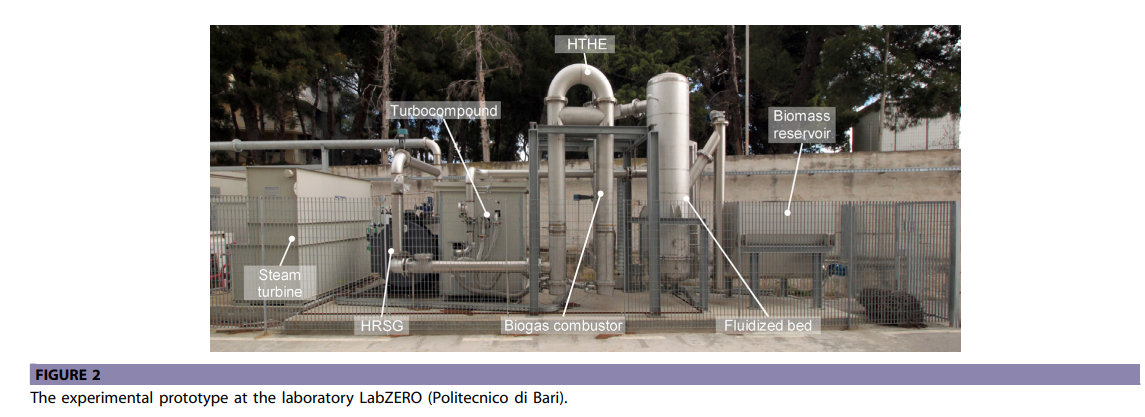
Figure 8. The experimental prototype at the laboratory Lab ZERO [7].
3.2.2. Small-scale biomass gasification power generation. Gasification of biomass to provide gaseous fuel for power generation is currently recognized as one of the primary alternatives to fossil fuels, despite the high cost of capturing large amounts of biomass. A variety of small-scale biomass gasification systems are being developed and deployed in Europe, North America and Asia. Countries in Africa and Latin America should be areas of growth and potential for the practical application of this technology, especially in developing countries [3]. The two main types are bubbling fluidized bed gasifiers (BFBG) and circulating fluidized bed gasifiers (CFBG). Figure 9 shows the whole schematic of both BFBG and CFBG designs.
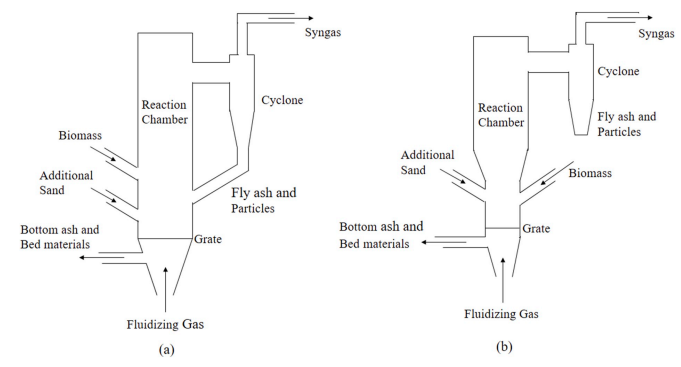
Figure 9. Schematic of (a) BFBG (b) CFBG [9].
4. Mini/Micro gas turbine
Mini-/micro turbines are portable and easy to install; with their supercharging system of small integrated energy supply equipment, their power is generally less than 500 kW.
4.1. Advantages
Small and microturbines offer several potential advantages over other small-scale power generation technologies, especially distributed generation, though there are a number of technical and non-technical barriers to the implementation of this technology [10]. The most remarkable advantages are compact size and low-weight per unit power.
4.2. Market
Micro turbines have substantial potential for power generation in the industrial, commercial and residential markets. But the biggest utilization of micro turbines may be in combined heat and power systems. Gas turbines have high exhaust heat quality, i.e., high temperature, which can generate the heat needed for industrial engineering or space heating. In order to achieve higher efficiency, the micro-turbine can pass the exhaust through the recovery period to improve the power efficiency, so the final available thermal grade quality is lower (temperature) [10]. Their market potential is uncertain, but they have great value in all varieties of areas especially industrial and commercial sectors.
5. Drawbacks and challenges
The scope of this emerging technology still has many non-ignorable drawbacks, but scientists have been working hard to find the most effective solution. For example, a population-based search algorithm called ant lion optimizer has been proposed for non-convex economic load dispatch problems [11]. An investigation of a new LNG cold-utilized power generation and cryogenic CO2 capture system according to the energetic and thermos-economic approaches determined the workable operating conditions for practical engineering applications. The calculation result shows that the gas turbine and the compressor rank first and second respectively when summing up damage and component costs [12]. Moreover, there are several obstacles in technical and economic aspects for renewable energy to enter the mainstream energy supply chain. Speaking of the institutional aspect, government policy also influences success. For instance, the Ministry of Energy, Green Technology and Water in Malaysia established Special Committee on Renewable Energy (SCORE) [13].
6. Conclusion
In this paper, the author presented two typical examples of small-scale power generation from stationary gas turbines, explaining their advantages and significant global utilization. The author now has more acknowledgment and a better understanding of stationary micro gas turbines and different types of power plants. This kind of small-scale power generation popularization has become increasingly important because of its fuel flexibility, higher thermodynamic efficiency and more advantages. Anyway, some limitations of this updated technology still need to be solved.
For all varieties of small-scale power generation using gas turbines, there is always a need to improve the systems further to achieve higher efficiency. The mounting height, the system's diameter, the materials used, and other parameters may be considered for further system exploration.
References
[1]. Kaundinya D, Balachandra P and Ravindranath N 2009 Renewable and Sustainable Energy Reviews 13 2041
[2]. IEA. 2017 Key world energy statistics. International Energy Agency
[3]. Situmorang Y, Zhao Z, Yoshida A, Abudula A and Guan G 2020 Renewable and Sustainable Energy Reviews 117 109486
[4]. Reyhaneh B and Mohsen A 2022 Energies 15 8084
[5]. El-Khattam W and Salama M 2004 Electr. Power Syst. Res. 71 119
[6]. Owens B 2014 The Rise of Distributed Power https://www.windpowerengineering.com/rise-distributed-power/
[7]. Amirantea R, Brunob S, Distasoa E, Scalab M and Tamburrano P 2020 Renewable Energy Focus 34 57
[8]. Megwai G 2014 University of Borås, School of Engineering
[9]. Sansaniwal S, Pal K, Rosen M and Tyagi S 2017 Renew Sustain Energy Rev 72 363
[10]. Pilavachi P 2002 Applied Thermal Engineering 22 2003
[11]. Vikram K, Ashutosh B and Bath S 2017 Neural Comput & Applic 28 2181
[12]. Baris K, Xiang L, Dubey S, Choo F and Duan F 2019 Energy Conversion and Management 181 507
[13]. Nor F, Ahmed N and Mat S 2017 Renewable and Sustainable Energy Reviews 72 228
Cite this article
Wang,M. (2023). Small-scale power generation using stationary gas turbine with renewable energy. Applied and Computational Engineering,11,111-117.
Data availability
The datasets used and/or analyzed during the current study will be available from the authors upon reasonable request.
Disclaimer/Publisher's Note
The statements, opinions and data contained in all publications are solely those of the individual author(s) and contributor(s) and not of EWA Publishing and/or the editor(s). EWA Publishing and/or the editor(s) disclaim responsibility for any injury to people or property resulting from any ideas, methods, instructions or products referred to in the content.
About volume
Volume title: Proceedings of the 2023 International Conference on Mechatronics and Smart Systems
© 2024 by the author(s). Licensee EWA Publishing, Oxford, UK. This article is an open access article distributed under the terms and
conditions of the Creative Commons Attribution (CC BY) license. Authors who
publish this series agree to the following terms:
1. Authors retain copyright and grant the series right of first publication with the work simultaneously licensed under a Creative Commons
Attribution License that allows others to share the work with an acknowledgment of the work's authorship and initial publication in this
series.
2. Authors are able to enter into separate, additional contractual arrangements for the non-exclusive distribution of the series's published
version of the work (e.g., post it to an institutional repository or publish it in a book), with an acknowledgment of its initial
publication in this series.
3. Authors are permitted and encouraged to post their work online (e.g., in institutional repositories or on their website) prior to and
during the submission process, as it can lead to productive exchanges, as well as earlier and greater citation of published work (See
Open access policy for details).
References
[1]. Kaundinya D, Balachandra P and Ravindranath N 2009 Renewable and Sustainable Energy Reviews 13 2041
[2]. IEA. 2017 Key world energy statistics. International Energy Agency
[3]. Situmorang Y, Zhao Z, Yoshida A, Abudula A and Guan G 2020 Renewable and Sustainable Energy Reviews 117 109486
[4]. Reyhaneh B and Mohsen A 2022 Energies 15 8084
[5]. El-Khattam W and Salama M 2004 Electr. Power Syst. Res. 71 119
[6]. Owens B 2014 The Rise of Distributed Power https://www.windpowerengineering.com/rise-distributed-power/
[7]. Amirantea R, Brunob S, Distasoa E, Scalab M and Tamburrano P 2020 Renewable Energy Focus 34 57
[8]. Megwai G 2014 University of Borås, School of Engineering
[9]. Sansaniwal S, Pal K, Rosen M and Tyagi S 2017 Renew Sustain Energy Rev 72 363
[10]. Pilavachi P 2002 Applied Thermal Engineering 22 2003
[11]. Vikram K, Ashutosh B and Bath S 2017 Neural Comput & Applic 28 2181
[12]. Baris K, Xiang L, Dubey S, Choo F and Duan F 2019 Energy Conversion and Management 181 507
[13]. Nor F, Ahmed N and Mat S 2017 Renewable and Sustainable Energy Reviews 72 228





